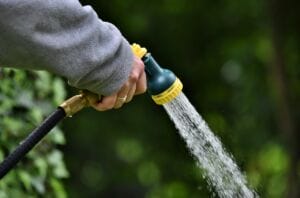With winter comes the cold, snow, ice and freezing pipes. While most homes stay insulated and warm, any pipe that has sitting water and is exposed to cold temperatures can be victim to freezing. Essentially, the water inside turns to ice. At a molecular level, the water has to expand to become a solid. This force and pressure ultimately can cause a joint leak or literally crack a pipe with enough ice creation.
The Expanding Nature of Freezing Water
Ice is often underestimated in the power and pressure it can produce. In fact, it is water, freezing ice and cold that causes rock as hard as granite to break apart during the winter. So, metal pipes don’t stand a chance. The most effective way to avoid burst pipes in winter is prevention, using pipe wrap, keeping the water flowing even a little, and heating basements where key plumbing is located. However, it doesn’t solve every situation. And when a pipe does burst, professional help is needed right away.
Cut Off the Problem
The first step in a burst pipe is to cut off the feed, otherwise, the water may continue to flow now that the ice is dislodged. Otherwise, all the water coming out ends up flooding the area and, if cold, also turns to ice as well. The cleanup and repair can easily turn into hundreds or thousands of dollars in costs otherwise.
With the water off, the line that remains that is stable needs to be cleared of ice. This may involve warming the pipe to melt what is inside enough that it drains or, with a bit of pressure, pushes out. The remainder that has burst has to be disconnected and replaced with a new line.
Since pipe bursts happen during what is probably deep cold and high demand, emergency calls may take some time to be responded to. In these cases, consumers and homeowners need to be prepared to keep the water turned off so that further damage doesn’t occur. The plumbing underground tends to be insulated by the earth, but the pipes that are exposed and still intact should be wrapped to prevent ice forming inside them as well.
Once the new line is installed and sealed, testing occurs to confirm the pipe feed works and water is flowing correctly again. And if missing, insulation is added to prevent another ice block forming again.
Prevention Can Still Be Applied
Most times, pipe bursts will happen with older plumbing that is exposed outside, in basements that have no heating, or in walls without insulation. If these are accessible, it’s a smart idea to put insulation in where possible and wrap if reachable. The small cost paid for the materials will easily save thousands in avoided burst pipe repair service.
Let the Water Run
While it might seem doing so generates a cost for a utility bill, keeping a home’s water running during a deep freeze is probably one of the smartest ideas and the least expensive compared to a burst pipe repair. Running water keeps the liquid flowing through the home’s plumbing. This in turn prevents the ice from forming inside the pipes. It doesn’t need to be a full open faucet. Instead, simply allowing a steady drip is enough to displace water and keeps it moving towards the faucet within the line. That negates the ice forming with sitting water inside.
Expert advice recommends leaving the exit tap or faucet farthest away from the main line dripping because it triggers water movement through most of the home’s plumbing system. While this isn’t a perfect fix, it does help tremendously during a deep freeze. On really bad cold nights, families frequently open a few faucets to expand the effect.




